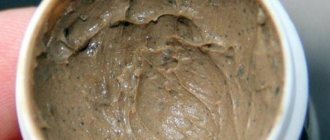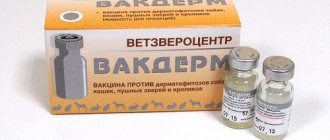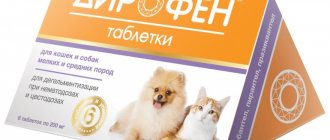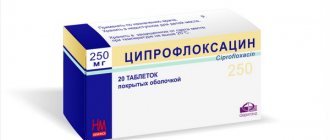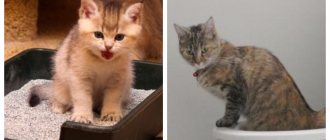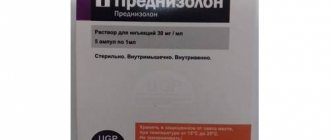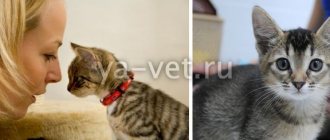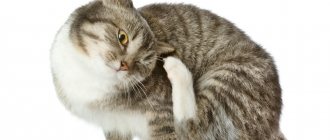How to treat lichen in cats: drugs, ointments and folk remedies
Skin lesions in animals can be fungal or viral in nature. The most common ringworm in cats is caused by the pathogenic fungi Trichophyton and Microsporum. Other, less common varieties of lichen include:
- pink (viral in nature);
- red flat (etiology unclear);
- multi-colored (pityriasis) (fungal nature);
- weeping (eczema).
Ointments of various types can be used to treat any of these types of diseases, except pityriasis rosea. No specific treatment has been developed for it. Your cat needs good nutrition and a healthy immune system. A symptom of this type of disease is a multitude of pink spots located throughout the body, which over time become yellowish. Wrinkles on the skin begin to appear in the affected areas.
The ointment is an effective remedy for the most common type of lichen - ringworm. A fungal infection most often affects the face, the area behind the ears, paws and tail. In some areas, the skin begins to become covered with scales and peel off, and baldness in the affected area is observed (as if six were cut off).
If a pet owner notices such abnormalities on the skin, it is necessary to immediately begin treatment, since the disease causes severe discomfort to the animal. The fungus can quickly spread on surfaces and be transmitted to humans, so it is advisable to isolate the cat from children (who have not yet developed immunity to fight the fungal infection).
If the disease cannot be cured with local medications, then the help of a specialist will be required. The veterinarian may decide to prescribe oral medications. Most often they are used in severe or severely advanced cases.
Important! Treatment of lichen with any tablets is prohibited for pregnant and lactating cats and kittens.
If even a tiny ulcer appears on your pet’s face or paws, you should show it to a doctor. If lichen is confirmed in a cat, the veterinarian will prescribe medications for treatment. What remedies are most effective and is it possible to get rid of the disease at home?
Cats of any breed are vulnerable to fungal diseases.
It is not always possible to use a vaccine or purchase drugs to treat lichen at a veterinary pharmacy. In this case, it makes sense to use homemade recipes. Folk remedies are good at the initial stage of the disease, but they are best used as additional therapy in parallel with medication. It is advisable to check with your veterinarian in advance about how medications are combined with home remedies.
Traditional medicine recipes should be used carefully and only after consulting a doctor.
Before you begin treating the affected skin, you need to carefully trim the hair. The procedure is carried out strictly with gloves to avoid infection with fungus. Then you can use any of the following options:
- iodine. Universal disinfectant. It is enough to lubricate the skin around the affected area twice a day;
- celandine. This medicinal plant has long been used to treat skin diseases. For treatment you will need juice from fresh celandine stems. The plant must be collected in an ecological zone without chemical production nearby. The stems are finely chopped, wrapped in gauze and the juice is squeezed out. The prepared product should be applied to the lichen 3 times a day. Avoid contact with eyes and mouth;
- lemon juice. Acid destroys pathogens and speeds up the healing process. In order not to harm the cat, lemon juice is mixed with olive oil and lubricated on the affected areas 4 times a day;
- herbal collection To prepare a medicinal decoction you will need chamomile, nettle, creeping thyme, string and oregano. Collected or purchased herbs are mixed in equal quantities and brewed with boiling water at the rate of 200 ml of water per 2 tbsp. spoons of raw materials. The mixture should boil for half an hour in a water bath, then the broth is cooled, filtered and given to the cat 1 tbsp. spoon before eating;
- essential oil. Tea tree essential oil has pronounced antifungal properties. To treat ringworm, it is applied to the affected areas. Before use, essential oil must be diluted with regular olive oil - 3 drops per 1 tbsp. spoon;
- alcohol solution. A topical treatment for lichen can be prepared by mixing 30 ml of alcohol with an aspirin tablet.
Before using any herbs, you must make sure that the animal is not allergic to them.
- 1 General information about the treatment of scabies
- 2 Recommendations for the use of ointments
- 3 The best ointments for treating scabies in humans 3.1 Sulfur ointment
- 3.2 Permethrin ointment
- 3.3 Krotamiton ointment
- 3.4 "Benzyl benzoate"
- 3.5 Zinc ointment is a good therapy for scabies
- 3.
6 Vishnevsky ointment - 3.7 Gel “Medifox”
- 3.8 Balm “Greek”
The scabies mite is transmitted through household contact and causes discomfort. To destroy it, use scabies ointment.
The action of the drugs is aimed at inhibiting the vital activity of the pathogen and reducing symptoms. If you suspect you have scabies, you should consult a doctor. The doctor will prescribe medications and select a regimen for their use. Otherwise, complications await the person.
People living with an infected person should undergo tick testing. They are prescribed a preventive course.
Treatment for scabies infection is aimed at destroying the scabies mite. An ointment, spray or lotion with an antiparasitic effect helps to achieve this. Re-infection is possible through contact with sick people.
There are preventive measures to prevent this. They are used by people living with the infected person. Treatment should be carried out under the supervision of a physician.
In this case, it is necessary to strictly follow his recommendations and general principles of treatment.
Effective therapy is impossible without following the rules. These include the following points:
- Before starting treatment, all the patient’s clothes and bedding should be washed and boiled for 10 minutes.
- The best results are observed when applying any anti-scabies remedy before bed.
- The entire body should be smeared, especially the folds on the arms and legs. The exception is the scalp - you don’t need to touch it.
- You should not shower or bathe during therapy.
- After each hand washing with soap, they are re-treated.
- Upholstered furniture is treated with a parasite repellent.
- At the end of treatment, you should take a bath with soap and change all your underwear.
- If after a course of treatment the symptoms do not stop, you should consult a doctor.
Sulfur ointment is used to treat skin diseases.
A simple sulfur ointment for scabies has a disinfecting effect. In addition, it is endowed with antiseptic properties. Prescribed for a variety of skin diseases accompanied by itching and rashes.
The method of application is to rub a small amount of ointment into and around the infected area. The maximum period of use is 7 days. The drug has no contraindications or adverse reactions of the body.
Treatment of scabies with sulfur ointment has disadvantages:
- poor absorption into the skin;
- sweating disorder;
- unpleasant odor, since the main component is sulfur;
- change in skin color after applying the ointment, which lasts up to 3-4 days.
Permethrin ointment has antiparasitic and antiseptic effects. The effect is achieved due to the penetration of the active substance into the cells of the parasites, which leads to paralysis. However, permethrin does not affect humans and is excreted by the kidneys.
A remedy for scabies is used for humans; it is also effective against infestation with mites and lice. Instructions for use assume external use of the ointment. In this case, a small amount of the product should be rubbed into areas of the skin affected by the disease.
We suggest you read: Small snails in the aquarium
A day after use, the skin should be washed with soap and clothes.
The drug can be prescribed to children over 3 years of age. In this case, it must be washed off 10-12 hours after application. If necessary, the procedure is repeated after 1-2 weeks. The ointment has a strong, specific odor, so it should be used in a ventilated area. Contraindication is individual intolerance to the components.
This ointment helps to get rid of not only ticks, but also their larvae.
"Crotamiton" is an odorless ointment, prescribed for the treatment of scabies and acts directly on the causative agent of the disease. Used as a supplement in the treatment of diseases accompanied by itching. Before starting treatment, it is necessary to study the sensitivity of the pathogen to the components of the drug. At the same time, the individual reaction of the body is checked.
After use, burning and skin irritation are possible.
"Benzyl benzoate"
Scabies or other parasites can be treated with the drug “Benzyl benzoate”. Its use should be under the supervision of a physician. Before use, the product must be prepared. To do this, soap, warm water and the product itself are mixed in certain proportions. Thoroughly moisten a cotton pad or gauze in the resulting mixture and wipe the entire body.
The procedure should begin with the arms, then the torso, legs and feet. After 10-15 minutes, everything is repeated in the same order. After this, the patient dresses in clean clothes, previously disinfected. After each hand washing, they must be re-processed. Swimming is allowed after three days of treatment.
The use of the drug in the presence of inflammation on the skin is prohibited.
The ointment is used for severe rashes.
How to treat ringworm in cats at home
Treating lichen in a cat at home using medications or folk remedies is not difficult. This is one of the most common diseases in domestic and stray cats. Ringworm can be transmitted to humans, causing damage to the hair and skin.
The most common one in cats is ringworm. The causes of its occurrence are the fungi Trichophyton, Microsporum, Epidermophyton. In 90% of cases, the causative agent is the Microsporum fungus. The second most common is pityriasis versicolor, caused by yeast-like fungi.
It spreads quickly throughout the animal's body and requires prompt treatment. Less common varieties of cat lichen include red and pink, which cause discomfort to the sick pet, but with proper care and feeding of the animal they are prone to self-healing.
Therefore, more attention is paid to the treatment of fungal forms of feline lichen.
How to recognize the spread of fungus in cats? It is not difficult to identify microsporia. At the first stage of the disease, a rash appears on the skin. If the cat has long hair, this sign may not be noticed. The onset of the disease can be suspected by the behavior of the animal.
Cats become restless, anxious, refuse food and often begin to scratch a certain area of the skin. The next stage of the disease is the appearance of round, hairless “islands” covered with scales, flaking in the center.
Pityriasis versicolor is hardly noticeable on the body of cats. Its sign is the appearance of pink, yellow-brown spots.
The most common places where lichen is localized in an animal are areas of the skin on the head, limbs, and neck.
When visiting a veterinary clinic, the doctor examines the animal using a fluorescent lamp, conducts a microscopic and bacteriological examination of scrapings, and makes a diagnosis.
After diagnosis, the doctor tells you how to properly treat ringworm in cats at home, and whether treating ringworm with folk remedies is acceptable.
Before you start treating your cat’s skin, you need to familiarize yourself with the rules for preparing for the application of antifungal agents and antiseptics.
Before starting treatment, it is necessary to cut the wool in the affected area, then it, along with napkins and other items for disposable use, must be burned, and the scissors must be sterilized.
If crusts begin to form at the site of the lichen, you should wash them with warm water and soap or antifungal shampoo. After treating the animal, it is necessary to disinfect the premises.
Before starting treatment of fungal lichen in cats with antifungal agents, it is recommended to treat the affected area with antiseptics. This need is caused by the fact that animals, experiencing itching, constantly scratch the lichen. The resulting microtraumas and scratches cause inflammation, suppuration and complicate the treatment of the disease.
The following are used as antiseptics:
- Fukortsin - suitable for use as an antiseptic and antifungal agent. After treatment with lichen, the cat may experience lethargy due to the action of phenol.
- Salicylic alcohol is used as an antibacterial agent capable of destroying fungal colonies. It is recommended to treat the affected area 2 - 3 times a day.
If mechanical damage occurs on the skin, it is allowed to use a solution of hydrogen peroxide, furatsilin or potassium permanganate.
The most effective products produced in the form of ointments are:
- Clotrimazole - contains the active ingredient of the same name, which effectively helps eliminate ringworm in indoor and outdoor cats. The ointment must be applied to the area damaged by the fungus three times in 24 hours, and the course of treatment is about 30 days. Analogues of the drug - Mikosporin, Clotrisal. The ointment should not be used on pregnant or lactating animals. The drug can also be used in the form of tablets or spray.
- Sanoderm is an ointment containing betamethasone (anti-allergic, anti-inflammatory component), gentamicin sulfate (antibacterial component), nipagin (antiseptic), clotrimazole. The cream is distributed over the affected area twice a day, and after the animal’s condition improves - once a day. The course of treatment does not exceed 4 weeks. If re-treatment is necessary, you must wait 20 days.
- Miconazole is an antifungal agent with the active ingredient miconazole nitrate. To get rid of the fungus, it is enough to lubricate the lichen twice a day. The duration of treatment is from 1 to 2 months.
- YAM is a complex action ointment. The composition of the ointment provides effective control of parasites, while simultaneously providing an antiseptic effect on the infected area. Ringworm must be treated twice a day for 7 - 10 days. The animal's hair is not pre-cut. After completing the treatment course, new hair growth is observed at the site of the lesion. The drug is toxic, so it is not used to treat kittens.
- Griseofulvin is an effective antifungal agent that can be used to treat adult animals and kittens. The ointment is applied for 14 days, 2 times a day. To enhance the therapeutic effect, you can give Griseofulvin to cats in tablet form, adding them to food (0.25 tablets for adult cats and 0.12 tablets for kittens).
The range of effective antimycotics expands the anti-lichen shampoo for cats. The best known is Nizoral (the active ingredient is ketoconazole) and its cheaper analogue is Sebozol. The use of shampoos prevents the spread of lichen throughout the body and is suitable for the treatment and prevention of diseases.
You should consult your veterinarian before treating ringworm in cats, as the instructions included with antifungal medications are often geared toward human awareness. Elimination of deprivation with the indicated doses of drugs can cause poisoning in pets.
Depending on the degree of neglect of the disease, the age of the animal and the state of its immune system, the doctor prescribes drugs for external use, internal use, or applies vaccines.
How can you cure lichen in a cat at the initial stage of the disease? First, administer an antifungal vaccine to the animal.
At least 10 days before administering the drug, it is necessary to deworm the cat. For this, Profender drops, Dirofen suspension for kittens, Prazitel or Milbemax sugar cubes, Cestal, Febtal tablets and other anthelmintic drugs can be used.
We suggest you read: Does a cat’s character change after sterilization? Important features
Popular and available immunostimulants are:
- Ribotan is administered subcutaneously or intramuscularly once every 24 hours for 3 to 5 days. If necessary, the course can be repeated after 10 days.
- Anandin is a drug often used to treat dogs, but is also suitable for boosting immunity in cats. Used in a dose of 0.15 - 0.2 ml/kg body weight once for 3 days.
Vaccines that promote the development of immunity in animals include:
- Vakderm is an inactivated vaccine, the introduction of which promotes the development of stable immunity in animals, including cats, to fungal skin lesions. The period for establishing immunity takes from 25 to 30 days when administered twice at equal intervals. The guaranteed effect of the vaccine is 1 year.
- Polivac - TM is a drug used for the prevention and early treatment of mycoses in cats caused by Trichophyton and Microsporum fungi. The vaccine is administered once or up to 4 times with an interval of 2 weeks. If the animal is infected, but ringworm has not manifested itself, Polivak-TM accelerates its development and contributes to the rapid progression of the disease. When healthy cats are vaccinated, they develop immunity after 20 to 30 days.
- Microderm is a vaccine against ringworm in cats and other animals. The vaccine is administered once and, if necessary, repeated after 10 days. It can be done on kittens from 1.5 months of age. Immunity develops over 1 month and lasts 1 year.
To remove ringworm in cats at an early stage of development, it is advisable to combine ointments, creams, lotions, and sprays. Advanced forms of lichen require the use of oral medications.
An affordable, common means of combating inflammation and fungal infections of the skin is Sulfur ointment. What is the reason for the therapeutic effect of the ointment? When sulfur, the active substance of the drug, gets on the skin, it provokes the formation of sulfides and pentathionic acid, which have healing and antiparasitic properties.
The composition of a regular sulfur ointment includes 33% sulfur, 64% petroleum jelly with emulsifiers. The ointment has no side effects or contraindications, will not cause intoxication of the body even when applied to large areas of the skin, therefore it is recommended for the treatment of animals and people of any age.
There are several types of sulfur-containing ointments:
- Serno is a tar ointment. it contains sulfur 5 - 10%.
- Serno - zinc ointment - helps get rid of lichen complicated by the development of the inflammatory process.
- Sulfur-salicylic ointment contains only 2% sulfur, but thanks to salicylic acid, blood circulation in the affected tissues is increased and its regeneration is accelerated.
How to remove lichen with sulfur-containing drugs? To get rid of fungal infections, the ointment is applied up to 2 times a day. to an area approximately 3 cm from the edge of the lesion, and directly to the lichen itself.
For complete therapy, it is important not only to know how to treat lichen in a cat, but also to be able to properly treat the skin areas affected by the fungus. Step-by-step instruction:
- trim the fur carefully. In some cases, the veterinarian may recommend trimming the animal completely;
- You need to cut your hair with sterile instruments and avoid scratches and wounds while cutting - the infection will spread even faster through the blood. After use, the scissors must be sterilized again, and the wool must be washed down the drain or thrown into a bucket in a tightly tied bag;
- It is easier to apply antifungal ointments and creams to the trimmed area, the drugs are absorbed into the skin faster;
- The products are applied only with gloves, otherwise you will have to treat yourself. Ringworm from an animal is easily transmitted to humans if there are scratches and hangnails on the hands.
Composition and release form of the drug
The dosage form of the drug is an ointment for external use: yellow, somewhat loose structure (in glass jars of 15, 25, 30, 40, 50, 70 g or in aluminum tubes of 25, 30, 40, 50 g, in a cardboard pack of 1 jar/tube).
Composition of 100 mg ointment:
- active substance: sulfur – 33.33 mg;
- additional components: petroleum jelly – 40 mg; emulsifier T2 – 6.67 mg; purified water – 20 mg.
Purified sulfur is used as a basis for preparing suspensions that are consumed orally, but precipitated sulfur cannot be used for these purposes, since in this case hydrogen sulfide (a very toxic substance) is formed. The beneficial properties of precipitated sulfur have been proven repeatedly, which has made it possible to include it in ointments, powders and other preparations for external application.
The product is represented by different percentages of the active substance, so the composition of sulfur ointment includes:
- 6, 10 or 33 g of this chemical element;
- purified water;
- petrolatum;
- emulsifier T2.
Sulfur-tar ointment is a thick brown substance with a characteristic pungent odor. In pharmacies, this medicine is sold in various packages, ranging from aluminum tubes to dark glass jars of various sizes.
The main active ingredients of the drug are precipitated sulfur and birch tar. The concentration of these components is 5 or 10%. Medical Vaseline is used as an auxiliary astringent in production. There are no preservatives, dyes, flavors or other chemical compounds in this ointment.
The drug should be stored in a cool place, protected from direct sunlight - a refrigerator is ideal for this purpose. The shelf life of the ointment is two years and after its expiration the medicine cannot be used.
By the way, don’t be alarmed when you see the “for animals” label on the packaging. In fact, the medicine is often used specifically to treat pets. However, it effectively treats diseases in humans.
Varieties
There are several main types of ointments that are used to eliminate dermatological diseases:
- antifungal;
- zinc;
- sulfuric;
- salicylic;
- tar.
Antifungal agents are the basis for the treatment of lichen of fungal origin. The most popular drugs include Clotrimazole and Miconazole. They have a wide spectrum of action against various pathogenic fungi. The active substance destroys the elements of the fungal shell and suppresses cellular activity.
Zinc ointment for lichen in cats is an excellent medicine at the initial stage of the disease. Its composition is based on zinc oxide and regular petroleum jelly. It has an anti-inflammatory effect, prevents the spread of infection, has a drying property, and accelerates the regenerative processes of the skin. However, it only affects the upper layer of the epidermis, so for deeper lesions additional medications will be required.
An external remedy with zinc can be used for ringworm, multicolored lichen, and eczema. The medicine is applied to previously cleaned affected areas 5-6 times a day until the pet is completely cured.
Sulfur ointment for lichen in cats is effective for pathologies of viral and fungal origin. It consists of a mixture of precipitated sulfur, petroleum jelly and an emulsifier. The medicine is produced in various volumes and concentrations of the active substance. The higher the percentage of sulfur in the drug, the deeper the medicine will penetrate into the skin.
Another popular treatment for ringworm is salicylic acid ointment. It also has different volumes and concentrations of the active substance (2, 5, 10%). Shows high effectiveness in the fight against weeping lichen. The product has high antimicrobial and antiseptic properties, helps restore the skin.
Tar ointment contains wood processing products. Natural components have antiseptic, anti-inflammatory and antiparasitic properties. The product helps reduce itching and relieve redness. It is effective for a variety of dermatological pathologies and can be combined with sulfur and salicylic acid preparations.
Fungin
An external antifungal medicine whose active ingredient is clotrimazole. Additionally, the composition includes propolis, isopropyl alcohol and dimethylformamide, which increase the activity of the main active ingredient and promote healing of affected areas.
Fungin is indicated for the treatment of ringworm in cats and dogs. It is applied to the infected area with a gauze swab in a dosage of 0.2-0.3 ml/1 kg of pet. The product is rubbed with light movements into the wound area, capturing about 1 cm of the healthy area around it. The treatment is performed once a day until complete recovery.
Effective treatment of the disease with medication
Skin is an indicator of the functioning of the entire organism of a four-legged friend.
Therefore, if you notice that your cat’s fur has lost its shine, has begun to flatter heavily, redness has appeared on the skin, or the animal is constantly itching, you should contact a veterinarian and have your pet examined for skin diseases.
The cause of the disease can be various infections, parasites, improper functioning of the digestive system, allergic reactions, etc. We will talk about common dermatological ailments of cats: ringworm, scabies, eczema.
Fungal diseases of cats The most common fungal diseases are trichophytosis and microsporia (popularly they are collectively called “ringworm”).
General symptoms of lichen include severe itching, redness of the skin, and the formation of scales or crusts.
With trichophytosis, the animal constantly licks the sore spot, which usually appears in the shape of an oval.
The affected area of the skin may be scratched vigorously and as a result acquires a scarlet tint, or becomes gray with a scaly crust.
Signs of the disease appear quickly, so owners often turn to a specialist in a timely manner.
Microsporia, on the other hand, is more difficult to diagnose, so it can affect a large area of the cat’s skin. This type of fungus rarely causes itching, and outwardly, the animal behaves calmly.
Treatment of microsporia takes a long time due to the fact that the entire affected surface cannot be treated at once, otherwise the animal may be poisoned.
We identify fungal diseases
Therapeutic measures
Fungal skin diseases of cats can be treated with sulfur ointment. This product has no side effects and will not cause unwanted consequences if the animal licks it. Sulfur ointment can be used until the cat has fully recovered.
At-risk groups
Kittens and adults with reduced immunity are prone to fungal diseases. It has also been proven that cats that eat exclusively dry food are more susceptible to skin diseases.
Ringworm can be transmitted from an infected cat to humans, so if signs of microsporia are detected, you need to put on sterile gloves, wrap your pet in a cloth and take it to a veterinary clinic to establish an accurate diagnosis and prescribe treatment.
We invite you to read: Snoopy - an exotic cat: photo and description of an exotic shorthair cat, features of the breed
To prevent ringworm, after the symptoms of the disease in the cat have passed, you need to thoroughly wash the apartment, furniture, toys and the pet’s tray with bleach, and it is best to burn the bedding on which the pet slept.
Scabies in cats usually occurs around the ears, on the neck and in the head area. The disease causes severe itching, accompanied by red dots on the affected areas, while the hair does not fall out, but becomes brittle and dull.
The mites that cause scabies in humans and cats are different, so don’t be afraid to get infected from your pet.
Scabies is easy to treat. To do this, use sulfur ointment or stomazan. For small affected areas, tar will be effective; do not be alarmed that it causes temporary drooling, it is not dangerous for the animal. If scabies is localized on the cat's ears, an alcohol solution of resorcinol and thymol will help (it is enough to treat 4 times).
To prevent your pet from becoming infected again, treat the room and change the bedding. If you have several pets in your home, do not allow the sick cat to come into contact with healthy animals.
This is an inflammatory process of the skin, accompanied by severe itching. As in people, eczema in cats can be dry (the skin turns red, dries out and cracks) and wet (a rash, purulent blisters and sores appear). The disease can be neuropathic, reflex and traumatic, depending on the causes that caused it.
Causes of eczema:
- allergic reaction to a chemical animal care product (shampoo, ointment, etc.);
- severe scratching, skin contamination;
- radiation damage to the skin;
- stressful situations;
- disruption of the internal organs of the cat.
Eczema in cats is a chronic, non-contagious disease and requires comprehensive treatment under the supervision of a veterinarian. Local remedies are prescribed depending on the type of disease.
The hair on the affected area of the skin is cut off, and the wound is treated with an antiseptic. Sedatives, antihistamines and vitamins are prescribed.
But the key to successful treatment is eliminating the root cause of the disease and creating comfortable living conditions for the cat.
All skin diseases in cats are highly treatable. And sincere care, a nutritious diet and timely veterinary care will speed up the recovery of your pet.
If a cat develops lichen, how to treat it is decided by the veterinarian after conducting the necessary examinations. The choice of a specific drug depends on the degree of skin damage in the animal, the size of the lichen formations, the age and breed of the animal. The general state of health and existing diseases are also taken into account. To treat lichen in cats, drugs are prescribed in three types:
- for internal reception;
- injections;
- for external use.
Often these drugs are combined with each other to make the therapy more effective. It will take 1 to 2 weeks for the external manifestations of lichen to heal. If there is no purulent inflammation, new healthy hair will grow in a month. With a complicated form of the disease, the cat may be left with scars.
To prevent complications, you should consult a doctor at the first symptoms of lichen.
Important! After the disappearance of external symptoms, it is necessary to get tested - the infection can remain hidden in the body. In this case, it will be more difficult to remove lichen.
In animals, lichen often becomes protracted, so injections and tablets are more effective in treating the disease. For oral administration, cats are often prescribed:
- Itraconazole;
- Terbinafine;
- Giseofulvin.
Medicines are given in crushed form, mixed into food. The dosage of drugs and the duration of the course are prescribed only by a doctor. You should not self-medicate, so as not to harm the animal even more.
In addition to tablets, the cat is prescribed intramuscular injections of Dermicocide. The drug is injected into the thigh 2-3 times, after which a break of 5 days is taken. The product has contraindications due to age; it cannot be injected into cats during pregnancy.
Ointments and shampoos
Ointments are effective in the treatment of weeping lichen in cats:
- salicylic ointment. Strong antiseptic, relieves inflammation and itching. The product should be applied to the areas affected by the fungus; the procedure is carried out twice a day. The treatment course lasts on average 14 days;
- ichthyol ointment. It is effective in treating fungal diseases, but it is worth considering that the animal may not like its pungent odor. Accelerates tissue restoration, destroys pathogens, relieves inflammation. The product is applied to the cat’s skin three times a day;
- tar ointment. Accelerates the healing of wounds from lichen. Therapy lasts from 1 to 1.5 weeks.
Shampoos are applied to the affected areas, foamed and washed off with warm water 3 to 5 minutes after application. If the cat is still small, then it is better to check with the doctor whether the listed drugs can be used.
Shampoo must be used strictly according to the instructions.
Reviews from veterinarians about acne
global $ads_google; //data-ad-slot=”2475549904″ $ads_google = empty($ads_google) ? false : true; ?> if ($ads_google == false) {?>
$ads_google = true; ?> } ?>
The opinion of representatives of veterinary dermatology is expressed in the advice not to self-medicate, but to visit a specialist: the sick animal must be examined, a scraping taken from the affected area of the skin and a laboratory test performed. This is done in order to exclude the possibility of other diseases, including allergies.
Feline acne is similar in symptoms to dermatophytosis, demodicosis, scabies and eosinophilic granuloma. The analysis will show whether there is reason to worry about the above diseases.
Veterinarians do not consider the disease to be serious and prescribe a qualified treatment regimen, which, if followed, will solve the problem quickly and easily.
Features of application
Fungal and viral infections that affect the skin of an animal can be transmitted to humans. In addition, they can settle on various surfaces, carpets, blankets, etc. Therefore, if a similar disease appears in a cat, you should follow the following recommendations to help stop the spread of infection and effectively treat your pet:
- The cat must be isolated in a room that can be easily treated with disinfectants.
- Avoid contact with children and elderly people, whose bodies may have a hard time withstanding such an infection.
- The animal is handled using rubber gloves.
- Before and after the procedures, the entire instrument is treated with an antiseptic.
- Areas of skin damage should be additionally trimmed of hair so that the ointment can be conveniently applied.
- It is necessary to remove the scales that are falling off well from the affected area.
- It is better to burn cut wool and scales to prevent the spread of infectious agents.
- The cat should be wearing a collar or muzzle to prevent it from licking the ointment.
Yam BC
This drug contains sulfur, zinc, salicylic acid, tar, turpentine, petroleum jelly and other excipients. It has antiseptic and astringent properties, which is effective in the treatment of trichophytosis, eczema and other dermatological infectious diseases.
YAM BC is applied in a thin layer to the wound, covering 2-4 cm of skin around it. In this case, you should not first remove scales from the affected area and additionally trim the hair.
The product is used 1-2 times a day for at least a week until the pet is completely cured.
Price: 70-90 rubles.
Ringworm vaccine
Vaccination is the fastest method of treating lichen in cats. It is also effective for preventive purposes, the only difference is in the dosage of the drug. There are three vaccine options:
- Polivac TM;
- Vakderm;
- Microderm.
The course of treatment consists of a series of 2 - 3 intramuscular injections with a break of 14 days. After the first stage, the animal’s condition becomes significantly better. Vaccination can be combined with drugs for external use to make treatment even faster and more effective.
Important! Injections should not be given to kittens and adult cats during pregnancy. Injections are contraindicated for infectious and inflammatory diseases.
Sanoderm
The drug contains the antifungal clotrimazole, as well as a broad-spectrum antibiotic. It is highly effective in the treatment of ringworm in cats and can be used in severe cases. However, its long-term use may negatively affect kidney function and may cause other adverse reactions. Therefore, before use, consultation with a veterinarian is necessary.
The ointment is applied in a thin layer twice a day. The course of treatment ranges from two to four weeks, depending on the severity of the condition. As you improve, the remedy is used once a day.
Price: about 160 rubles.
Treatment of the premises for ringworm
It is not enough to cure lichen in a cat; you need to carefully treat the room from fungus. Ringworm spreads quickly, it is dangerous to other animals and people, and the risk of re-infection increases. Home treatment is also a preventive measure, so it is very important:
- Wash your pet's bed regularly;
- clean carpets and upholstery with disinfectants;
- wash clothes and bedding regularly;
- Carry out wet cleaning in the house on time.
Owners can become infected with lichen from their pets. This most often happens to those who have weakened immune systems due to illness, children and the elderly. Regular cleaning and ventilation is enough to prevent infection.
Prevention and timely consultation with a doctor is the key to a cat’s health.
As a result, it is not necessary to let your cat go for a walk for him to become infected with shingles. Fungal spores are carried on shoes and clothing and, if the animal is weakened, it can become ill. To prevent this, you need to regularly clean, treat clothes and linen, monitor your pet’s immunity and get vaccinations on time.
